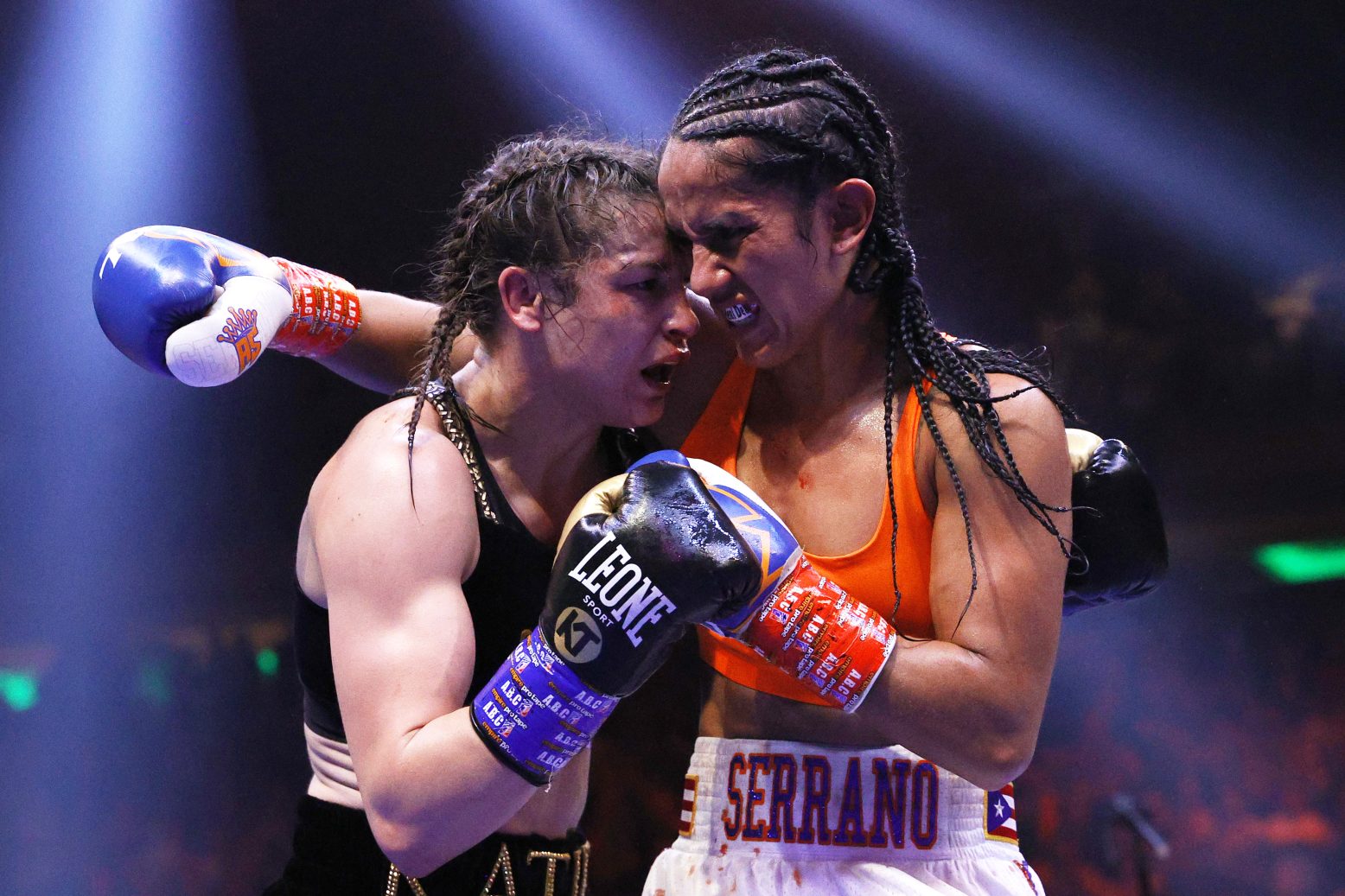Boxing is not a sport typically known for delivering on hype. Though its history is filled with legendary, iconic rivalries, too often it's been defined by purposely lopsided matchups, phony champions, and controversial authority figures. So forgive me if I had a bit of trepidation heading into the fight between Katie Taylor and Amanda Serrano at Madison Square Garden on Saturday night. It was hailed by its promoters as a pioneering event, the first women's boxing match to ever headline the world-famous arena, and in the buildup it became fairly commonplace to refer to it as "the biggest of all-time."
That kind of hyperbole should be an immediate red flag. The most lucrative fights in boxing history are littered with debacles, embarrassments, and disappointments, from Mayweather-Pacquiao to Tyson-Holyfield. But as Taylor and Serrano both made their walks to the ring on Saturday, my doubts disappeared. The claimed sellout crowd, which I initially took with a grain of salt, brought an unbelievable level of intensity to the proceedings, meeting Serrano and especially Taylor with deafening cheers that established both the high stakes and unprecedented significance of this match.
That this main event included two extremely passionate fighting fanbases—Nuyorican and Irish—also seemed to give anyone willing to watch an open door in, even if they weren't entirely familiar with the specific combatants. Later on in the fight, the fans, split 50/50 and each tying to be heard above the other, got so loud that they even seemed to drown out the sound of the bell ringing. This was big.
The MSG crowd is so loud the ref can't even hear the bell 🤯#TaylorSerrano pic.twitter.com/ImphE8qvV6
— DAZN Boxing (@DAZNBoxing) May 1, 2022
Adding to the atmosphere was the sheer rarity of such a spectacle within women's boxing, largely a fringe or condescended-to sport and often an illegal one. It was a long, long journey for both these women to get here, and mixed with the anticipation and excitement for such a massive showdown was a sense of relief that both these great athletes had made it to this pinnacle, that they were not just laying the groundwork for future generations to enjoy.
Taylor is the bigger star, as the Olympic hero of Ireland who made her name stateside by winning a classic against Delfine Persoon at MSG on the undercard of the Anthony Joshua-Andy Ruiz fight in 2018. But she famously began her career having to Mulan her way into fights against boys before, at 15, winning Ireland's first officially sanctioned women's boxing match. The underdog Serrano, meanwhile, had fought on a long and obscure road since turning pro in 2009, winning matches away from TV and earning payouts in the low four figures even as she built up one of the great résumés of the sport, until wins on the undercards of the Jake Paul-Tyron Woodley fights brightened the spotlight last year. Moving up from featherweight to lightweight, the chance to take Taylor's prolific collection of belts was Serrano's shot at a previously unimaginable immortality.
The event at the Garden bottled up the ecstasy of decades of hard work finally paying off. The pressure created by such a spectacle, however, made it all the more likely that if this fight didn't live up to expectations, it would be used for years to come as an excuse to close off opportunities for other women. Thankfully, nobody left the fight disappointed, as the in-ring action not only matched all the pomp and circumstance, but set the stage flawlessly for a sequel.
Unlike a typical men's boxing title fight, which consists of 12 three-minute rounds, concerns about the more serious effects of head trauma on women limit even the most prominent matches to 10 rounds lasting two minutes each—barely half of what the men get. Serrano spoke out in the buildup about wanting equal time for this bout, but Taylor offered a defense of the current circumstances, arguing that the fast tempo made the matches more exciting. She had plenty of evidence for her point in this one. Serrano and Taylor fought at a Ramones-like pace, furiously exchanging blows like they were all too aware that they only had 20 minutes to make an impression on this audience. And it was Serrano, particularly in a supreme fifth round, who appeared to have the upper hand, seriously damaging Taylor and even threatening a stoppage as Taylor expended all the energy she could just to survive.
AMANDA SERRANO CATCHES FIRE 😮#TaylorSerrano pic.twitter.com/1ooevhuTjE
— DAZN Boxing (@DAZNBoxing) May 1, 2022
Every scorecard had Serrano up or at least tied after six, but in the later stages, beginning in the seventh, a downshift into a more conservative approach allowed Taylor a chance to recover and come roaring back. She stayed calm in a quiet seventh and then turned the tide in the eighth and ninth, setting the stage for a delirious finale that left both fighters exhausted and bloodied as they embraced, while the crowd cheered for more.
The end result was a split decision in favor of Taylor—a plausible outcome but not the victor I would have called when the fight finished, with Taylor perhaps nudged along by the invisible champion's advantage. For everyone, however—maybe even including Serrano—this is a dream result, controversial without seeming corrupt, and close enough that it can be debated right up until a rematch that should put even more money in both these women's pockets. Ahead of that next fight, another argument will likely come up again about whether or not women should be allowed more time in the ring, and I certainly wouldn't be against adding more minutes to this budding rivalry. But in the aftermath of this monumental achievement, a perceived flaw in women's boxing may well turn out to be the strength that allows it even greater exposure: It's nearly impossible to be satisfied by just one match.






